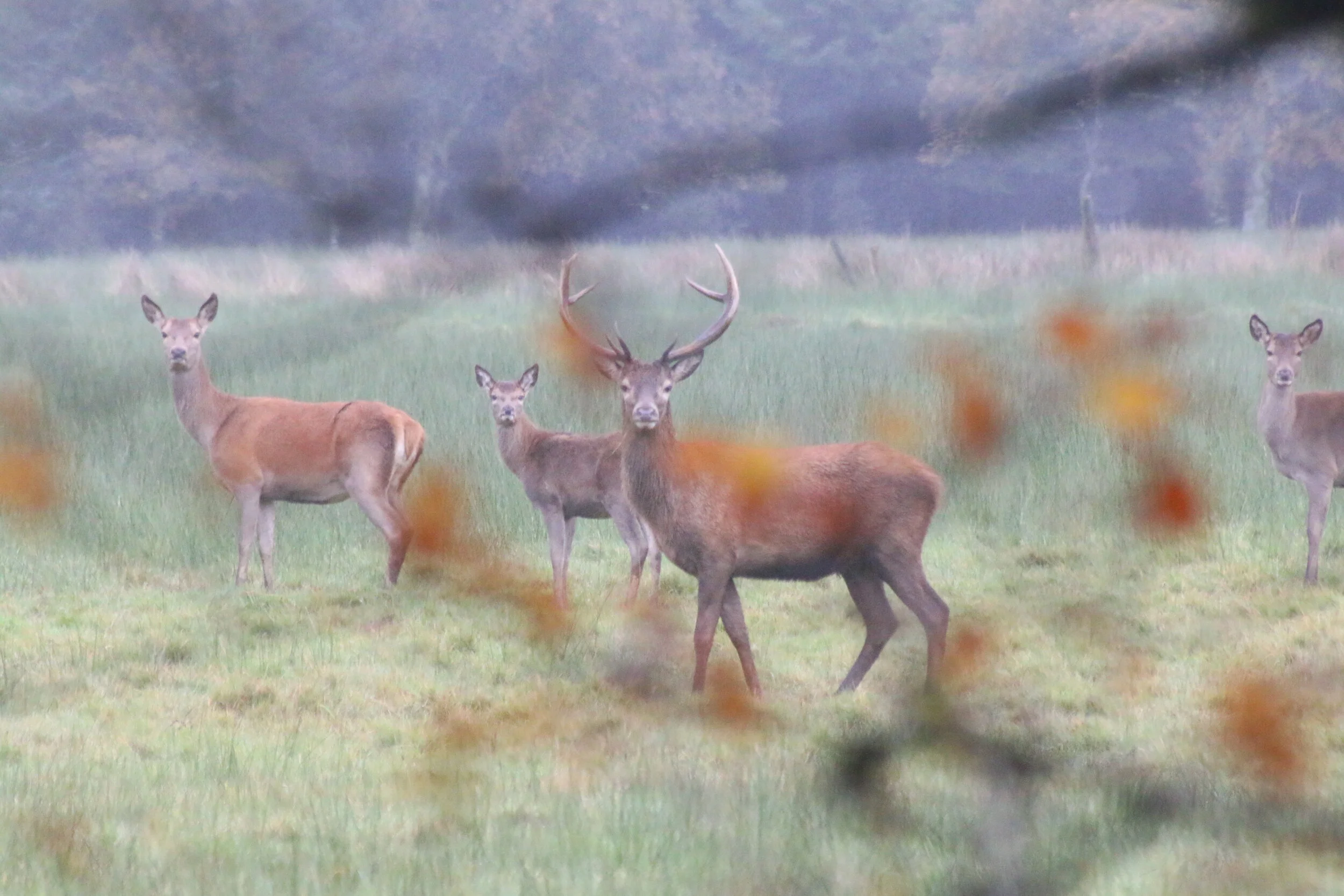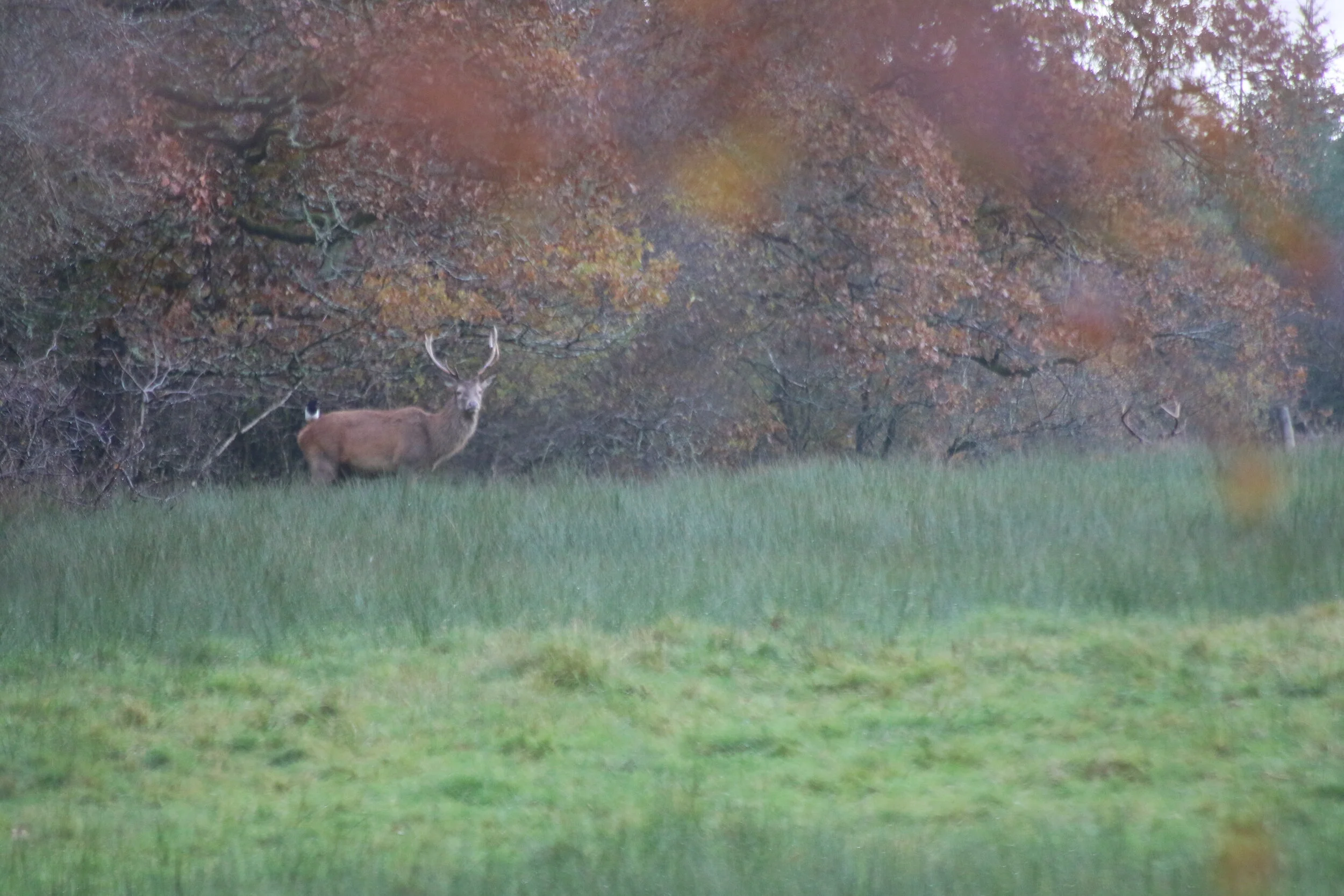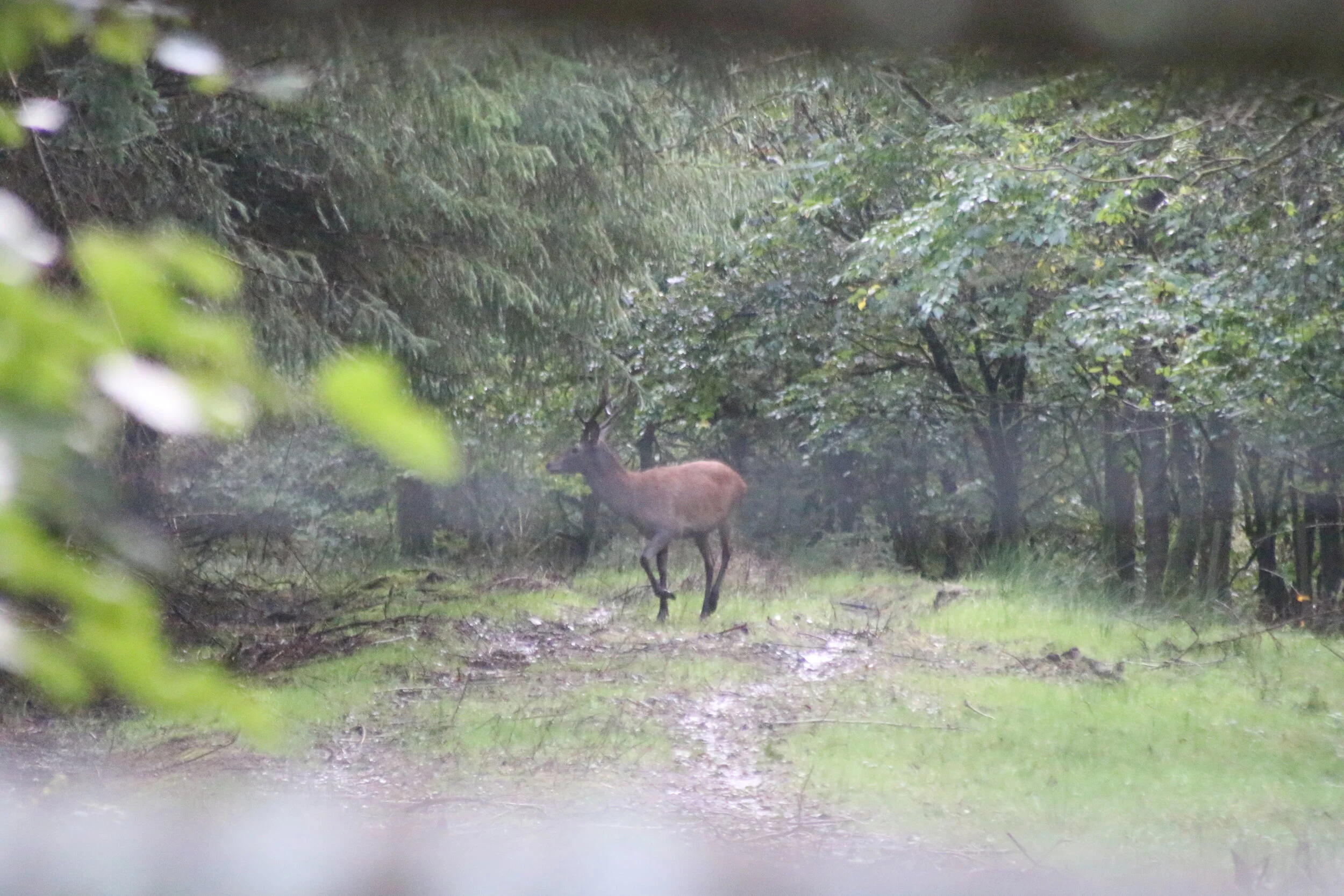Devon Red Stags including a Young White Hart Oct 2020
These are from a woodland site we manage. These guys are in good condition and not ones we would look to cull given the current population dynamic and habitat impact. White Stags, are surrounded in mythology and folklore and whilst they are a genetic mutation, we would look to keep this one in the herd.
An interesting blog article on why wildlife needs to be managed
The below link is to an interesting article written by James Barrington as a guest writer for the GWCT (formerly of the League against Cruel Sports). He raises some valid points on why culling is an essential tool in the wildlife managers toolkit. The Exmoor Red case is well documented and provides a real insight into what can happen when management is not undertaken properly.
Grey Squirrels
With spring really started to flow, now is the perfect time to understand the grey squirrel population and what impact they are having. If numbers are high, then now is the best time to start reducing them by humane control. This will not only help the trees, but will also help to take pressure of the nesting birds. Please get in contact if we can help with this.
Habitat Impact Assessments
An important part of any deer management plan and woodland wildlife management plan is the habitat impact assessment. The next few weeks are the ideal time to conduct these as the spring flush commences.
The Deer Initiative and Forestry Commission provide a couple of techniques and by using other resources, a detailed habitat impact survey will provide a good basis for plans for the forthcoming year. By understanding the Woodland Management plan/Land management plan, habitat impact assessments can be tailored to understand what impact deer and other wildlife are having. With regard to deer, the plans should be able to ascertain the impact that each species of deer is having on the flora and what areas are being impacted the most, if any. The assessment should also throw up any species of flora which are under particular pressure. We also look to understand if any of the other mammalian species are causing an impact, for example grey squirrels, rabbits and voles.
Depending on the findings the deer management cull figures can be adjusted accordingly for each of the species to ensure the resident population is maintaining a sustainable impact. Where areas of particular damage are being seen then these should become focused areas for stalking to maintain pressure and push the deer away from that area, or fenced if funds allow. Where a particular species of flora is suffering, than an alternative higher value item might be worth planting. All these considerations are delivered from the information contained in the habitat impact assessments, which is why we put a lot of time and energy into delivering the highest level of detail we can in the report.
Grass Cutting for Silage Mortality
As the spring season moves on, the time of year is fast approaching when farmers will be looking to take the first cut of grass of the fields. Depending on the weather, this can coincide with the birth of young deer, in-particularly Roe deer.
The modern machinery used for these operations is often very large and fast which can lead operators to being at a disadvantage when spotting well camouflaged young deer, whose predisposition is to not move when they sense a threat.
Research on understanding the full extant of the impact of deer numbers is relatively limited, although European researchers estimate approx. 25 -44% or the yearly recruitment of Roe deer are killed by mowing (see research paper below).
There are various solutions which have some success, however it is appreciated they come with time and, sometimes, cost implications.
Some links to research papers on the findings and solutions to reducing the mortality rate can be found below.
We are happy to help, for free, with any advice or controlled sensitive field checks for any one who is interested, as this forms a very important part of conservation of the native deer species and there management.
Research Webpages;
www.cic-wildlife.org/wp-content/uploads/2013/04/Mowing_guide_EN.pdf
Red Deer Trail Camera Clips
As part of management techniques we use trail cameras to monitor the deer and other wildlife in the area. The clips in this blog are from a small area of woodland where the Red deer have recently been allowed to return following the opening or deer gates and establishment of crossings. The clips where taken in early February and considering the wet winter they all look in good condition.
Red Stag
During the early autumn months, I have been looking at the level of Red Deer activity in the area as the rut commenced and concluded. A different year to last with the popular area from last year, which held several Stags and multiple Hinds, having no activity.
Another area did show some activity and the Stag in the photos below did hold this area for approximately 3 weeks. I only ever saw one another Stag with him. As you can see in the photos, whilst he is in good condition, he is not a particularly old Stag ( approx. 4-5 years old). With a large number of Hinds in the area, the low number of mature Stags is something which could do with more work to understand if the population dynamic for the Reds in the area is balanced and healthy.
Young Stag out with Hinds and calves middle of October.
A Stag with the photo taken in early Nov. If you look on the right hand side the antlers of a larger Stag are visible.
A Red Stag from October nearby to the one above.
Roe Deer Chasing
One of the benefits of putting in a crossing point is that it becomes a focal point to monitor deer activity in the area. The clip below shows a more dominant Roe Buck chasing a younger individual out of his area. As the rut approaches ( around July) and the testosterone levels increase, so does the level of aggression. Gathering this level of information really helps develop the deer management plan and ensure decisions are based on as much information as possible.



